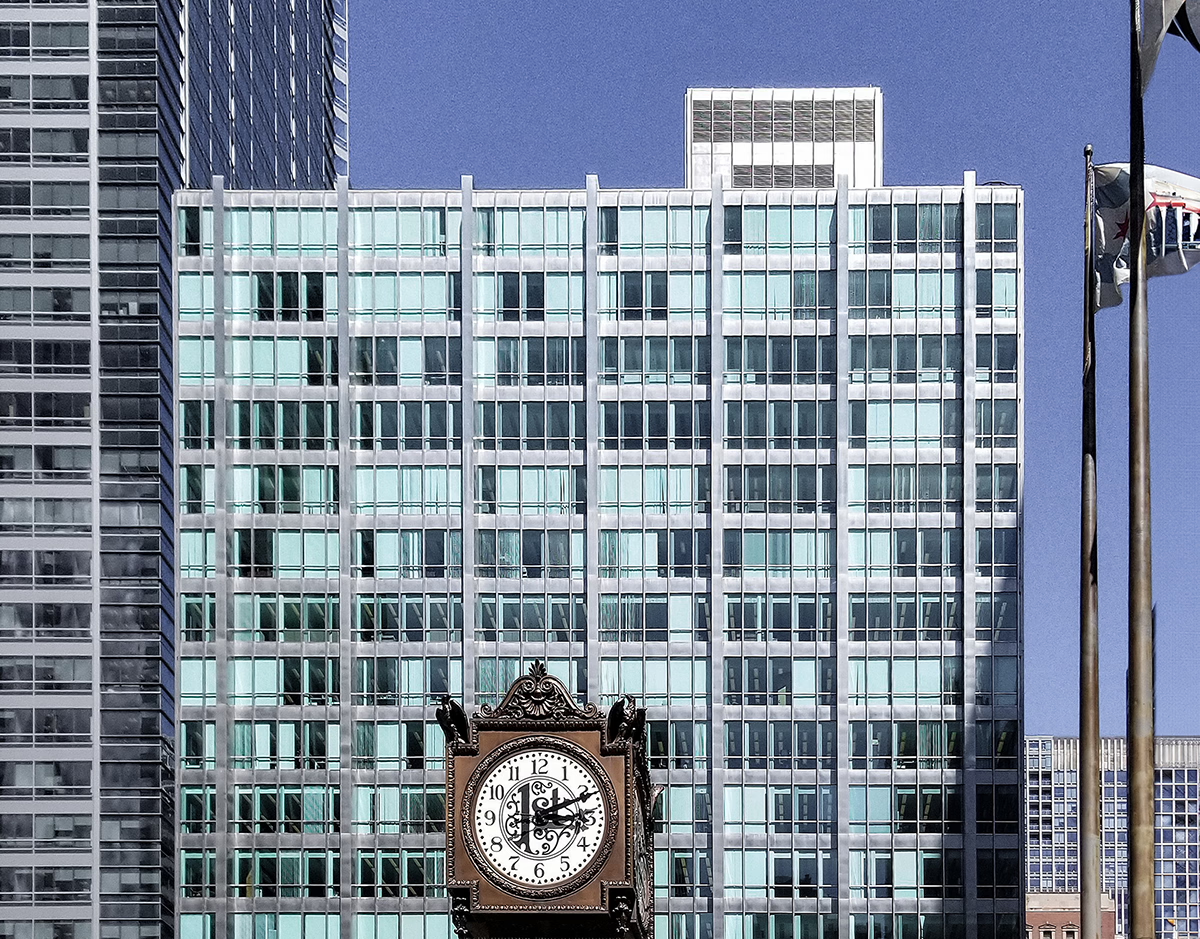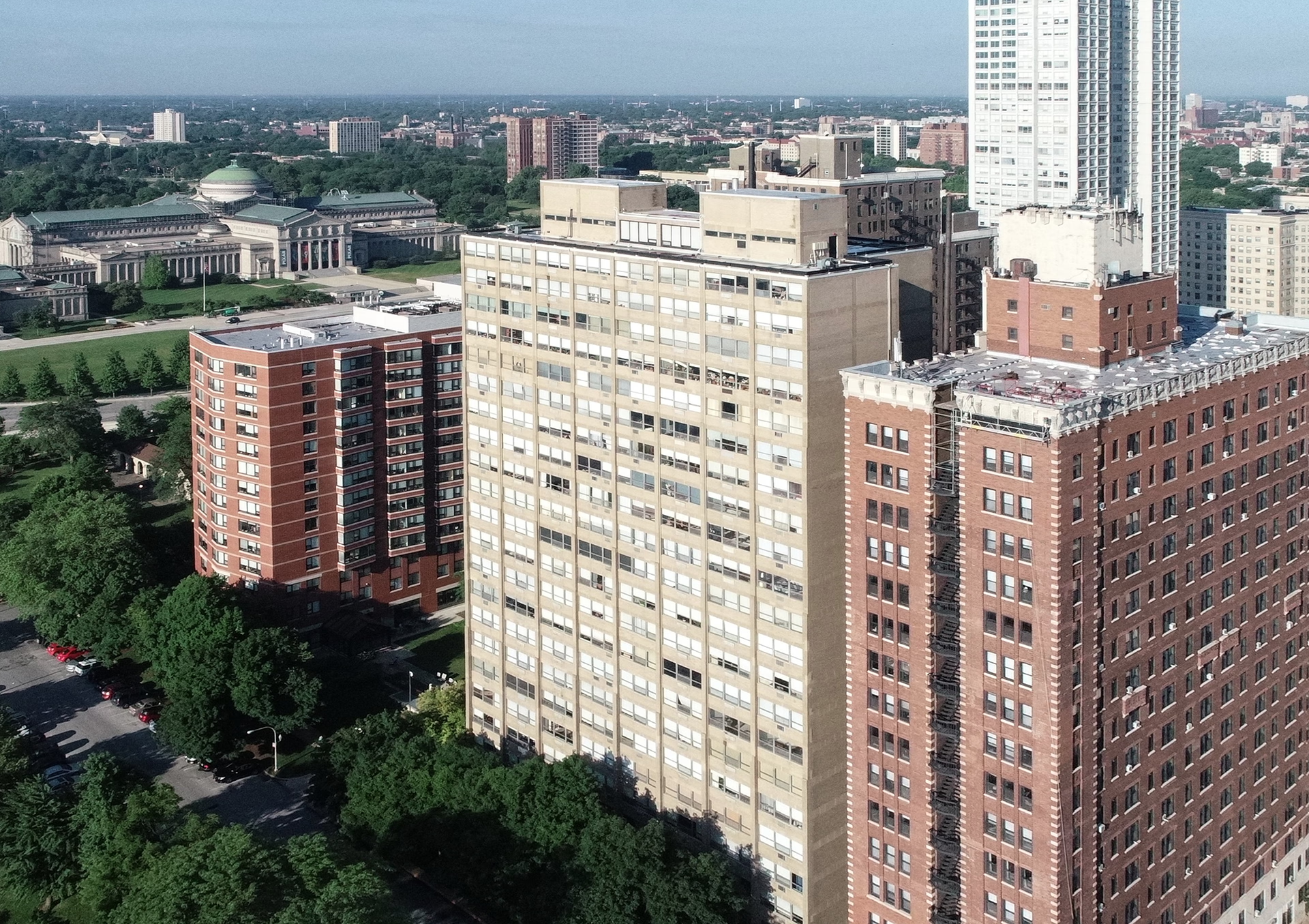Inland Steel Building vs Promontory Apartments


Comparing the Inland Steel Building and the Promontory Apartments is interesting because they both rise in Chicago, IL, yet they were conceived by two different design teams, Skidmore, Owings & Merrill and Mies van der Rohe, and were completed at different points in time. They were finished more than 9 years apart.
This contrast within the same city allows us to see how different creative minds interpreted the evolving needs of Chicago across time.
Let's take a closer look!
Height & Size
These two towers present an interesting contrast in their proportions. The Inland Steel Building rises higher at 331ft (101m), while the Promontory Apartments reaches 218ft (66.5m). However, the Promontory Apartments accommodates more floors with 22 levels above ground, compared to 19 floors in the Inland Steel Building.
This suggests different approaches to interior space design. The Inland Steel Building has an average floor-to-floor height of approximately 5.3m, while the Promontory Apartments has more compact floors averaging around 3m each. The taller building's more generous floor heights might indicate grander interior spaces, higher ceilings, or different programmatic requirements.
These different proportions likely reflect the specific needs each building was designed to serve, whether driven by zoning regulations, client requirements, or the intended use of the spaces within. The contrast shows how architects can achieve different spatial experiences even when working with similar overall building scales.
Architectural Style
Both the Inland Steel Building and the Promontory Apartments were designed in line with the aesthetic conventions of the International Style style.
At the time, this style was at the height of its popularity. So both Skidmore, Owings & Merrill and Mies van der Rohe followed what was in many ways expected of them, producing designs that fit comfortably within contemporary architectural norms, rather than breaking with convention.
Uses
The Inland Steel Building is primarily commercial, while the Promontory Apartments is primarily residential.
The Promontory Apartments offers 122 residential units.
Structure & Facade
Both towers share the same structural solution, a Frame system.
A frame structure uses a grid of columns and beams to carry the building's loads. This frees the walls from structural duties, allowing for flexible floor plans and larger windows.
However, when it comes to the facade, both buildings use different approaches. The Inland Steel Building uses a Curtain Wall facade, while the Promontory Apartments uses a Window Wall facade.
A Curtain Wall facade like the one seen in the Inland Steel Building uses a lightweight glass curtain wall hung from the structure, while a window-wall facade like the one seen in the Promontory Apartments uses panels fitted between floor slabs, leaving slab edges visible.
| Inland Steel Building | Promontory Apartments | |
|---|---|---|
| Skidmore, Owings & Merrill | Architect | Mies van der Rohe |
| 1956 | Design Ended | 1947 |
| 1957 | Construction Started | 1947 |
| 1958 | Year Completed | 1949 |
| International Style | Architectural Style | International Style |
| Commercial | Current Use | Residential |
| 19 | Floors Above Ground | 22 |
| 3 | Floors Below Ground | 1 |
| 101 m | Height (m) | 66.5 m |
| Frame | Structure Type | Frame |
| Steel | Vertical Structure Material | Concrete |
| Yes | Facade Structural? | No |
| Glass, Stainless Steel | Main Facade Material | Brick |
| Inland Steel Company | Developer | Herbert Greenwald |
| IL | State | IL |
| Chicago | City | Chicago |
| 30 W. Monroe Street | Address | 5530–5532 South Shore Dr. |